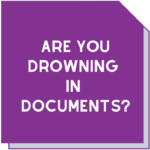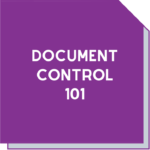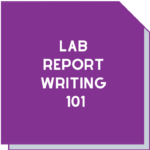5 tips for writing good Policies and Procedures
written by Maree Stuart
 Have you heard that in New Zealand, they’re legislating for laws to ensure that bureaucrats use plain language? You’re probably thinking, that would be nice, but how does it relate to me?
Have you heard that in New Zealand, they’re legislating for laws to ensure that bureaucrats use plain language? You’re probably thinking, that would be nice, but how does it relate to me?
Have you read an ISO standard or NATA accreditation document recently???
Apart from those ISO and NATA documents, we see lots of people who write complicated and dense policies and procedures that don’t use plain language. They do this for several reasons. It might make them look more educated to their colleagues. It could be that they think that’s what NATA or a certification body expects.
There’s an art to writing a good policy or procedure.
You may be starting with a blank page. Or you might have something that you need to update. Either way, it’s time to go back to basics to work out what makes a good policy or procedure.
What are they for?
Documents are for providing written information about processes, policies, and procedures. They’re designed to communicate information and need to be updated and maintained. This means that they need to be clear and concise and most importantly, easily understood.
Generally speaking, lab documents can be defined as:
Policies – a statement of overall intent and direction. This is a broad and general direction for the quality system and in essence tells people which direction to head.
Processes – these are the steps used to implement the quality policy and achieve quality objectives. They are a set of interrelated or interacting activities that turn lab inputs into outputs. These explain how it happens.
Procedures – the specific, detailed, and step-by-step explanation of carrying out activities. These can be considered an explanation of how to do it.
Records – the pieces of information that prove what you did.
Lab documents allow you to review your activities. They help you to train your staff. Excellent documentation provides proof of accurate, reliable testing not just to clients but also to external accreditation or audit bodies.
In fact, the management of documents and records is an essential element of a lab quality system.
Who are they for?
The American Press Institute tells us that: “The best story is a well-told tale about something the reader feels is relevant or significant”. Like any good story, your policies and procedures need to be well-told, so making the information relevant or significant in the eyes of the reader is paramount.
How do we do that? Put yourself in the shoes of everyone who will read and use the documents. What’s the local lingo? How do people in your lab or organisation like to understand information?
It’s through answering questions like this that you’ll discover whether you’re just writing procedures because a standard or external organisation tells you to, or if you’re writing for the right audience who will use your documents every day.
Why am I doing this?
 It may be tempting for staff to skip over documenting something they think is unnecessary or too time consuming for them to bother to explain. Or perhaps they received a verbal instruction from a colleague, carried out the action but didn’t document how it was done.
It may be tempting for staff to skip over documenting something they think is unnecessary or too time consuming for them to bother to explain. Or perhaps they received a verbal instruction from a colleague, carried out the action but didn’t document how it was done.
In essence, all systems depend on someone doing a thing. If someone doesn’t do that thing, the system fails.
Seeing the whole picture should remove the temptation to skip over documenting a piece of work they don’t believe is relevant.
It’s important for staff to have clarity on what place their work has in achieving outputs of the process, or the goals of the organisation. That will help you understand what level of detail, and the kind of detail that should go into a policy or procedure.
Keep it simple
Software and digital tools make this easier, but any standardised lab approaches to documentation across operations will also streamline this process. Using templates will ensure consistency of information and data collection and capture.
How do you write something in plain language?
Whilst we might think our friends across the Ditch are pioneers in this plain language approach, perhaps they’re not. Did you know the Australian Government has a Style Manual for writing in plain language?
Some basic tenets of using plain language in English include:
- Use everyday words
- Learn about the words people use
- Choose simple words, not complicated expressions
- Use common words rather than jargon as much as possible.
- Use concise sentences (15-20 words max)
- Use active, not passive voice (“if you break the law” not “if the law is broken”)
- Use verbs rather than complex nouns (“identify” not “identification”)
That’s a lot to consider!
If you’re not sure how to bring this all together, we have an excellent training course, Dot Points to Documents, where you can learn techniques to make your policies and procedures shine! You’ll learn:
- why good writing is important
- how to produce good documents and make them readable and actionable
- when pedantry has its place – and how to handle reviewers who want things written ‘their way’
- when to use technical language vs the ‘local lingo’.
Contact us to find out more including when our next course is running.
Remember, you don’t have to do this alone!
Download the article 5 tips for writing good policies and procedures






